In a world with 1 TW of global solar capacity, spending $5 per kilowatt per year on operations and maintenance would generate $5 billion in annual revenue. By 2030 we may be deploying 1 TW a year – generating $5 billion in new opportunities a year for O&M practitioners.
With that in mind, it was no surprise that there was a double digit number of groups showing off their panel cleaning robots.
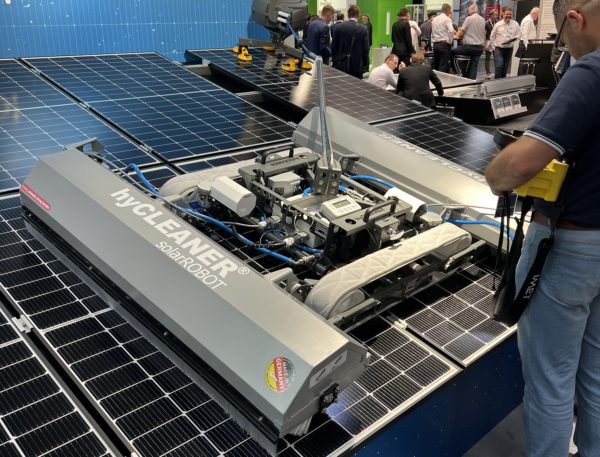
The hyCLEANER solarROBOT in the featured image above has recently launched in the United States. The representative in the booth told me they have a salesperson, Carla Dawson, showing off their units up and down the coast of California on existing solar power projects.
Another panel cleaning company, SolarCleano, shows off their wearable remote control unit (below). This design helps workers operate their robots from a safe location, so they can keep their eyes on the robot as it moves.
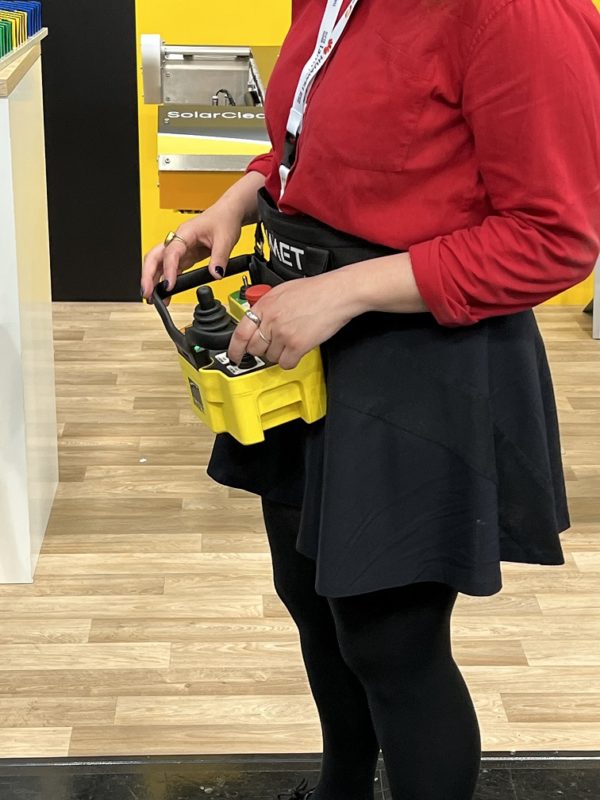
The company also pointed out that they sell a transport unit, the T1, which helps move these robots from one rack of modules to another.
There were at least half a dozen additional robotic panel cleaners, in addition to more traditional vehicle based cleaning arms.
A solar install company that was visiting one of these robotic groups was discussing how the O&M portion of their business has grown, and are now providing a most stable revenue for their companies.
Across from the six Intersolar halls were two halls for ees Europe – housing mostly lithium ion batteries, as well as flow batteries and hydrogen technology.
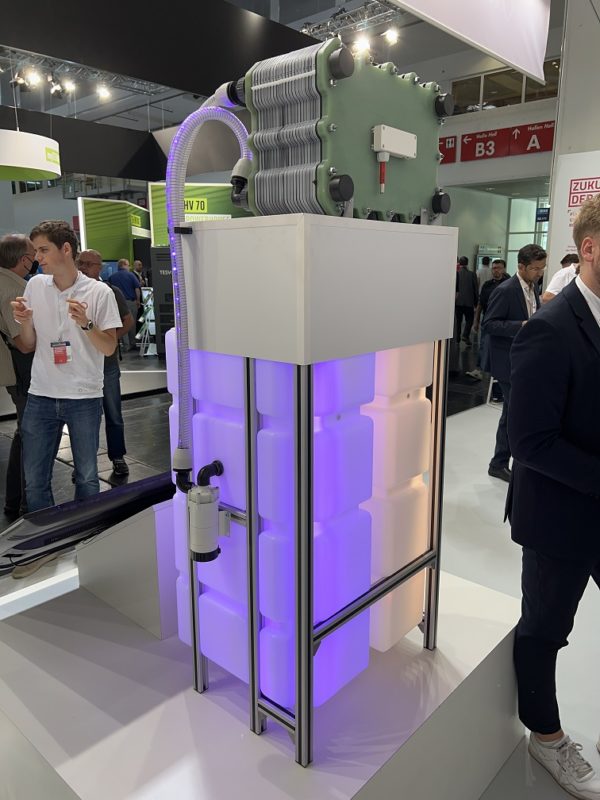
Voltstorage was exhibiting their flow batteries. The representative told me that vanadium redox flow batteries were first invented by NASA in the 1970s. The company offers this product for commercial customers. They also offer an iron salt flow battery for more cost-competitive, larger and longer duration settings.
Green hydrogen was a hot topic, with some presenters suggesting an inevitable freight train of industry expansion coming. Geopolitical concerns have been driving the market more than anyone in the industry expected, as government investments promise to be massive, and sustained.
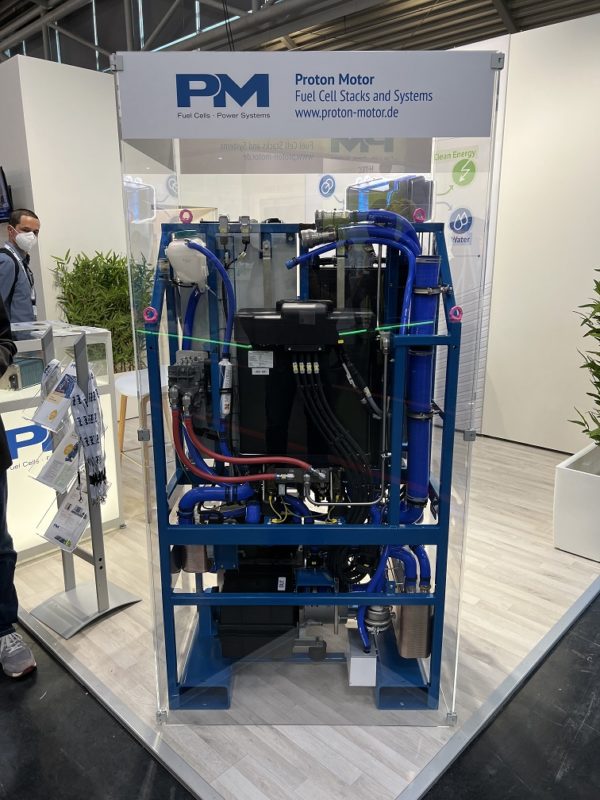
There were a few hydrogen units, including the modular fuel cell from Proton Motors of Germany (above). Their 3-foot wide, 2-foot deep, and more than 5-foot tall “PR Frame” can build up fuel cell systems with outputs ranging from 3.1 through 42.6 kW output.
And of course, many vendors were displaying elegantly wired lithium ion batteries. Lithium ion products did in fact dominate the two rooms that were focused on energy storage.
Fenecon showed off their Commercial 30 unit that holds a range of 30 to 90 kWh per stack. To be honest, it was the color, and the striking simplicity of the wiring which caught this author’s eye.
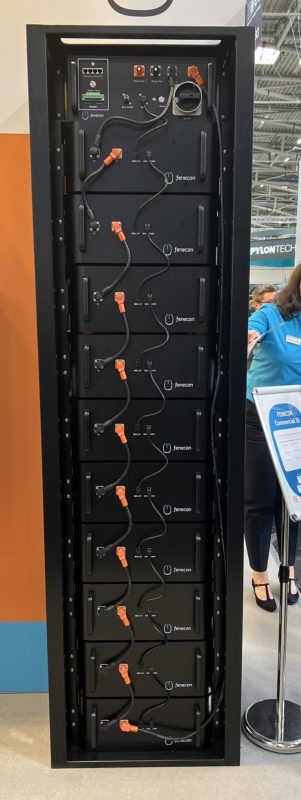
The night ended with an invitation to an event hosted by Baywa RE in downtown Munich. Spirits were high as discussions focused on challenges of product availability, and various deliveries promised by distributors.
If we were to invest in spirit alone, then Europe appears to be a good bet for significant growth in volume deployed in 2022.
This content is protected by copyright and may not be reused. If you want to cooperate with us and would like to reuse some of our content, please contact: editors@pv-magazine.com.








By submitting this form you agree to pv magazine using your data for the purposes of publishing your comment.
Your personal data will only be disclosed or otherwise transmitted to third parties for the purposes of spam filtering or if this is necessary for technical maintenance of the website. Any other transfer to third parties will not take place unless this is justified on the basis of applicable data protection regulations or if pv magazine is legally obliged to do so.
You may revoke this consent at any time with effect for the future, in which case your personal data will be deleted immediately. Otherwise, your data will be deleted if pv magazine has processed your request or the purpose of data storage is fulfilled.
Further information on data privacy can be found in our Data Protection Policy.